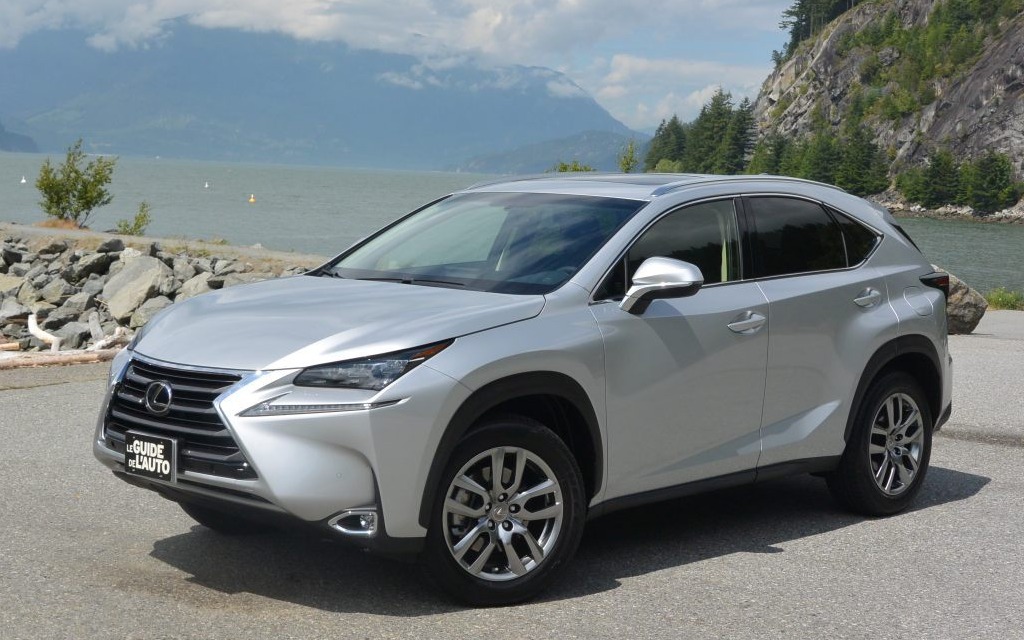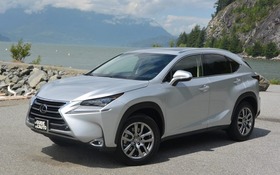2015 Lexus NX: Bring on the Competition!

| Strong points |
|
|---|---|
| Weak points |
|
In 1998, when the newly formed Lexus division introduced the RX, few people (not even the brand’s management team) realized that a new category was being born: the intermediate luxury crossover segment. The vehicle’s success was both immediate and spectacular. The general characteristics and dimensions of the RX would become the category’s benchmarks—and they’ve stuck.
But innovation is never constant, and Lexus fell seriously behind in the compact luxury SUV category (which includes the Audi Q5, Mercedes-Benz GLK and BMW X3), even though it has been in existence for quite some time. Toyota’s high-end brand was simply not in the game.
The wait is now over, as the new NX is slated to make its mark. Being late to the party has allowed this vehicle to equip itself to the teeth in preparation to take on its diverse and carefully crafted competitors. Lexus fans will be happy to know that they haven’t held back with NX and are offering three different trims to satisfy the needs of a wide range of customers.
Still the grille!
Not so long ago, most Lexus vehicles had rather morose exteriors. They needed something that would set them apart, the kind of special appeal that Audi, BMW and Mercedes-Benz products had been boasting for ages. There was no doubt that the generic appearance of Lexus vehicles turned off a good number of buyers. Today, things have changed. A new hourglass grille is making all the difference—and it goes without saying that it has been included on the NX.
The NX is available in three trims. The NX200t and NX Hybrid have horizontal bars instead of a grille, while the NX F Sport is decked out with a very nice honeycomb treatment. The vehicle’s rear section is tilted forward for a sportier overall look, though the design decision has resulted in a few lost litres of cargo space.
Inside, the dashboard is essentially the same one seen in the Lexus IS, give or take a few aspects. There’s the same analog clock and small display screen on the upper portion of the dashboard. The head-up display is a much-appreciated addition considering the vehicle’s category. This model’s unique features include the wireless cell phone charger and a touch pad for controlling various systems. It may just be a small detail, but Lexus is very proud of the front door handles' integrated lighting to let you see the lock below.
The NX F Sport goes further with added bolstering in the seats for better lateral support, non-slip aluminum pedals and a leather-swathed steering wheel. The rear seats are comfortable and offer plenty of room for your legs. As expected in a utility vehicle, the 60/40 seatback folds down at the mere push of a button. But you’ll have to put it back up yourself.
A first for Lexus
As often happens in the automobile industry, this model borrowed its platform from an existing vehicle. In this specific case, the Toyota Rav4 has shared its mechanics with the Lexus NX. That said, a section of the NX 300h’s platform comes from the Lexus CT. In a sense, hybrid vehicles have to help each other out.
But the most innovative mechanical part is the new 2.0-litre four-cylinder twin-turbo engine in the NX200T. A first for the division, it produces 235 horsepower and 358 lbs.-ft. of torque. This mill is married to a six-speed automatic gearbox and an all-wheel drive system with dynamic torque control.
The NX 300h is equipped with a 2.5-litre naturally aspirated four-cylinder engine that produces 194 horsepower and 152 lbs.-ft. of torque. It’s mated to a CVT that has a unique automatic kick-down feature for acceleration. All-wheel drive is achieved thanks to an electric motor that powers the rear wheels.
The last thing you should know about the mechanics is that all trims have a MacPherson strut suspension in front and a double-wishbone and swingarm suspension in rear. In this new design, the coil springs are separated from the shocks, which makes it possible to lower the floor further than usual for an SUV, while improving stability and ride comfort. The NX F Sport comes with Lexus’ adaptive variable suspension. It can be set to Normal or Sport S+ modes, the difference being optimum comfort or outstanding stability. On the NX200t, you have the choice of three driving modes: Eco, Normal and Sport. Meanwhile, the 300h adds an EV setting for selecting all-electric driving.
Pleasant or impressive
To make the platform as rigid as possible and ensure outstanding road handling, the Lexus engineers used several assembly techniques: welding screws with lasers to shorten the distance between weld points, using adhesive to join panels over a larger area, and adding more weld points to the roof and B pillars.
The vehicle’s rigidity is noticeable when you drive the “regular” version, while the handling is flawless and combined corners pose no problem. The vehicle’s base remains relatively stable and it stays neutral in turns. However, the steering is a little disconnected. The engine is well-adapted and the twin-turbo’s response time is imperceptible. The vehicle’s performance may not be extraordinary or sporty, but it is more than adequate.
Speaking of sport, the NX F Sport doesn’t actually have more power, but the adjusted suspension and Sport + setting really do wonders for it. You get more feedback from the road and a better sense of being one with the vehicle. Drivers can attack corners at high speeds without sliding across their seats, as the raised edges of the bucket seats hold you in place. This added support also makes it harder to get in and out of the seats, mind you.
Since this model was introduced a few months before its actual arrival in showrooms, the prices and fuel economy rates are not yet available. Logically, the manufacturer’s recommended retail price is expected to be between $40,000 and $55,000—about average for the category. Its fuel consumption stats should amount to less than 10 L/100 km for the 2.0-litre turbo.
Finally, there are plenty of electronic safety and driver-assistance systems, as would be expected from any vehicle looking to match what the competition offers.
Now we just have to wait and see whether younger customers will be wowed by Lexus’ new baby. Of the three trims, they’re most likely to be drawn to the F Sport.











